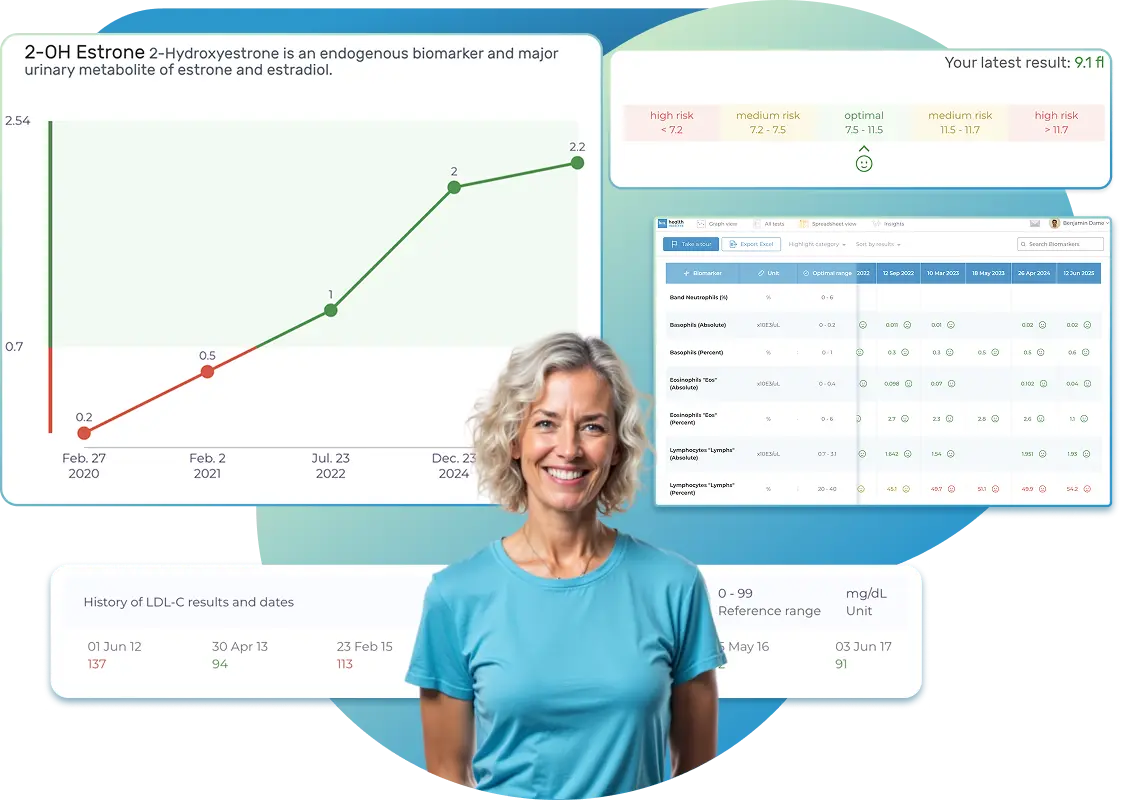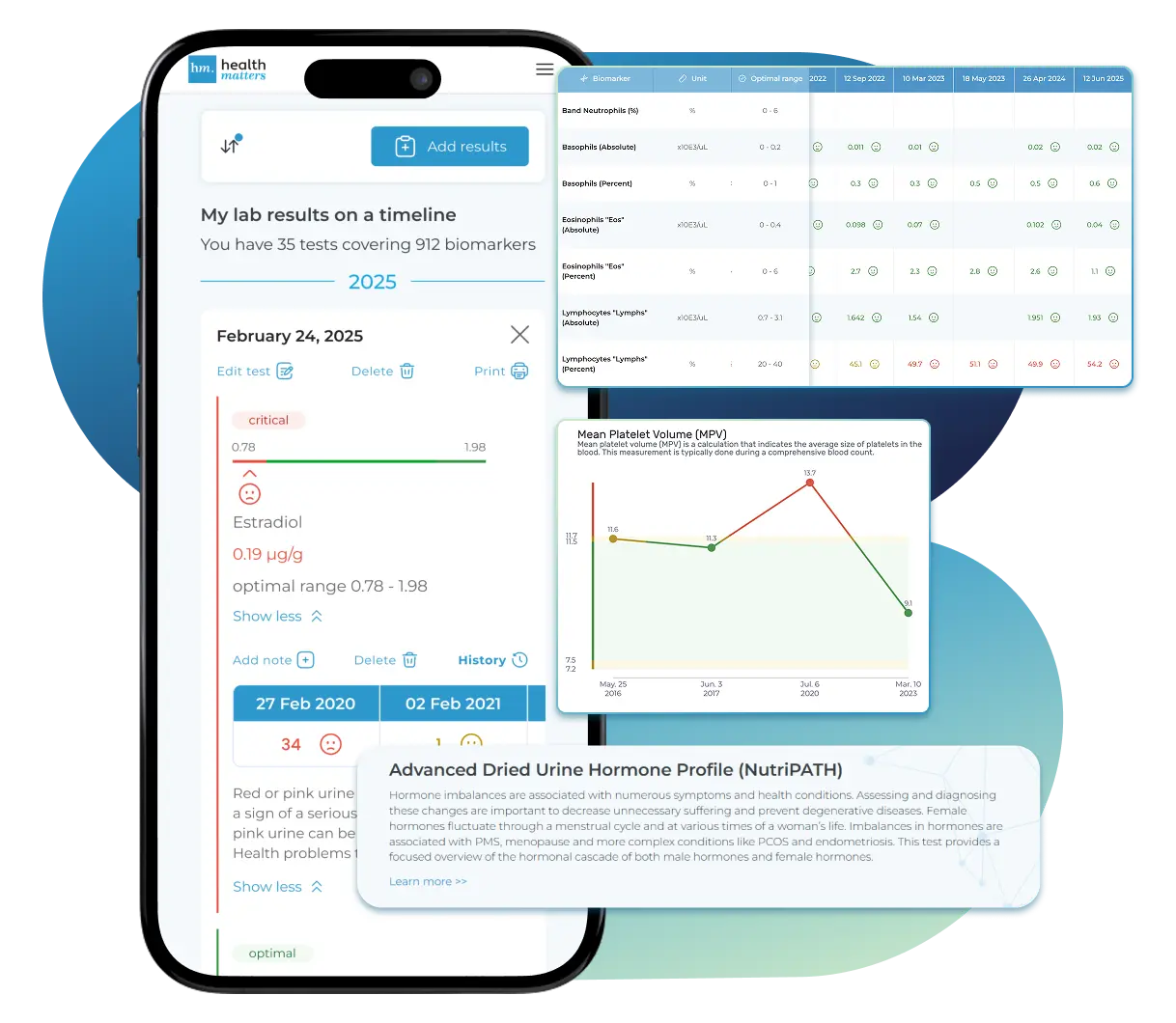Bacteroidetes are one of the two major bacterial phyla that dominate the human gut microbiome, alongside Firmicutes. These rod-shaped, Gram-negative bacteria are abundant in the human intestine and also occur widely in nature—found in soil, seawater, and on animal skin.
In the digestive tract, Bacteroidetes play a central role in breaking down complex carbohydrates and plant fibers that humans cannot digest on their own. Through this process, they produce short-chain fatty acids (SCFAs) such as acetate, propionate, and butyrate—compounds that nourish intestinal cells, reduce inflammation, and support immune balance.
Bacteroidetes are essential to a healthy, balanced gut ecosystem. Their activity supports multiple aspects of human health:
Fiber digestion and SCFA production: Bacteroidetes help convert dietary fiber into beneficial fatty acids that strengthen the gut lining, regulate inflammation, and provide energy for intestinal cells.
Metabolic regulation: Studies show that people with a higher relative abundance of Bacteroidetes tend to have a leaner body composition. This bacterial group is less efficient at extracting calories from food than some others, which may help protect against weight gain and support metabolic health.
Immune system support: Bacteroidetes interact with immune cells in the gut to promote tolerance toward beneficial bacteria while defending against pathogens.
Gut barrier protection: By maintaining SCFA production, these bacteria help preserve the integrity of the intestinal lining, reducing “leaky gut” and systemic inflammation.
Microbial stability: The Bacteroidetes phylum is considered one of the most stable and resilient components of the gut microbiota, helping to anchor overall microbial balance.
Research consistently links Bacteroidetes to healthy metabolism, inflammation control, and gut homeostasis:
Dietary fiber and immune protection: In a Nature Medicine study (Trompette et al., 2014), mice fed a high-fiber diet showed increased Bacteroidetes populations and higher SCFA levels, which protected them from allergic airway inflammation.
Lean vs. obese microbiota: A Science study (Ridaura et al., 2013) found that germ-free mice receiving gut microbes from lean human twins—whose microbiota contained more Bacteroidetes—remained lean and metabolically healthy, while those colonized with microbes from obese twins gained weight and developed insulin resistance.
Human associations: Observational studies suggest that lean individuals tend to have higher proportions of Bacteroidetes, while people with obesity often show lower levels, especially when consuming diets low in fiber and high in fat and sugar.
Inflammation and SCFA links: Research shows that diets promoting Bacteroidetes growth enhance SCFA production, which has been linked to lower inflammation and improved gut barrier integrity (Koh et al., Cell, 2016).
Together, these findings highlight the critical role of Bacteroidetes in maintaining digestive, metabolic, and immune health.
Your gut microbiome naturally adapts to what you eat and how you live. To encourage healthy levels of Bacteroidetes:
Increase dietary fiber: Eat a variety of plant-based foods—vegetables, fruits, legumes, whole grains, and nuts—to fuel beneficial bacteria.
Include prebiotic foods: Garlic, onions, leeks, asparagus, and chicory root help nourish Bacteroidetes and other fiber-loving microbes.
Limit processed and high-fat foods: Diets heavy in refined sugars and fats can disrupt microbial balance and reduce Bacteroidetes diversity.
Exercise regularly: Physical activity has been shown to enhance microbial diversity and support a balanced Firmicutes-to-Bacteroidetes ratio.
Manage stress and sleep: Chronic stress and poor sleep can alter gut microbial composition through the gut-brain axis.
Avoid unnecessary antibiotics: Overuse can deplete beneficial bacterial groups, including Bacteroidetes.
Bacteroidetes are beneficial gut bacteria that help digest fiber, produce anti-inflammatory compounds, and support a healthy metabolism. They are closely associated with lean body composition, improved gut barrier integrity, and lower inflammation.
A strong, balanced population of Bacteroidetes—alongside other key bacterial groups like Firmicutes—is a hallmark of a healthy, resilient gut microbiome that supports optimal digestion, energy balance, and immune function.
Trompette A. et al. (2014). Gut microbiota metabolism of dietary fiber influences allergic airway disease and hematopoiesis. Nature Medicine, 20(2):159–166. [PubMed: 24390308]
Ridaura V.K. et al. (2013). Gut microbiota from twins discordant for obesity modulate metabolism in mice. Science, 341(6150):1241214.
Koh A. et al. (2016). From dietary fiber to host physiology: Short-chain fatty acids as key bacterial metabolites. Cell, 165(6):1332–1345.
Schwiertz A. et al. (2010). Microbiota and SCFA in lean and overweight healthy subjects. Obesity, 18(1):190–195.
Arifuzzaman M. et al. (2024). Nutritional regulation of microbiota-derived metabolites and their impact on host health. Frontiers in Immunology.
Makki K. et al. (2018). The impact of dietary fiber on gut microbiota in host health and disease. Cell Host & Microbe, 23(6):705–715.
Houtman T.A. et al. (2022). Gut microbiota composition in relation to body mass index throughout childhood. Scientific Reports, 12:2347.
An elevated Bacteroidetes level on your GI-MAP test means that bacteria from this phylum make up a higher-than-normal share of your gut microbiome. Bacteroidetes are essential, beneficial bacteria that play key roles in digesting dietary fiber and maintaining metabolic balance. However, when their relative abundance becomes too high, it can indicate a microbial imbalance, or dysbiosis, within the gut ecosystem.
Because gut bacteria constantly interact with diet, metabolism, and immune function, the significance of elevated Bacteroidetes depends largely on the overall microbiome balance, particularly the Firmicutes-to-Bacteroidetes ratio.
To understand elevated Bacteroidetes results, it helps to look at their relationship with another major bacterial group, Firmicutes. Together, these two phyla dominate the human gut, typically making up over 90% of its bacterial population.
The ratio between them has been widely studied as a marker of metabolic and digestive health:
A higher Bacteroidetes-to-Firmicutes ratio is often associated with lean body composition, fiber-rich diets, and efficient energy metabolism.
However, when Bacteroidetes become too dominant, it may signal an overactive breakdown of carbohydrates, leading to increased gas production, gut irritation, or nutrient malabsorption.
This ratio is dynamic—it changes with diet, stress, medications, and lifestyle factors—so interpreting elevated levels should always consider the individual’s symptoms, habits, and overall health context.
Several factors can contribute to higher Bacteroidetes levels on a GI-MAP test:
High-fiber or plant-based diets: Bacteroidetes thrive on complex plant fibers. Diets rich in fruits, vegetables, legumes, and whole grains can raise their levels.
Low-fat or calorie-restricted diets: Reduced fat intake can shift gut composition toward Bacteroidetes dominance.
Fasting or rapid weight loss: Shifts in nutrient availability can temporarily favor Bacteroidetes species.
Recent microbiome changes: After antibiotic use or a restrictive diet, certain bacterial groups may rebound faster than others, leading to temporary imbalances.
Probiotic or prebiotic supplementation: Some supplements that enhance fiber fermentation can increase Bacteroidetes activity.
In most cases, elevated Bacteroidetes reflect dietary adaptation rather than disease, but when accompanied by digestive symptoms, they may indicate functional dysbiosis.
Although Bacteroidetes are beneficial, excessive levels can sometimes contribute to or correlate with digestive discomfort or imbalance:
Gas, bloating, or loose stools, especially after high-fiber meals
Reduced nutrient absorption or fat digestion efficiency
Inflammation or gut irritation, if overgrowth disrupts microbial equilibrium
Weight loss or low BMI, in cases where food energy extraction is reduced
Rarely, certain Bacteroidetes species—such as Bacteroides fragilis—can become opportunistic and contribute to infection or inflammation when the gut barrier is weakened. This typically occurs only when the overall microbial balance is significantly disturbed.
If both Bacteroidetes and Firmicutes are elevated on your GI-MAP test, it generally suggests an overall increase in bacterial load or activity within the gut, rather than a single imbalance. These two phyla make up the majority of intestinal bacteria, so simultaneous elevation often reflects microbial overgrowth—potentially due to diet, slowed gut motility, or excessive fermentation of carbohydrates.
While not always harmful, high levels of both groups can indicate gut dysbiosis, leading to symptoms such as bloating, gas, or irregular stools. This pattern may occur after antibiotic recovery, during high-calorie or high-fiber diets, or in cases of small intestinal bacterial overgrowth (SIBO).
Restoring balance typically involves reducing fermentable carbohydrate intake, diversifying fiber sources, and supporting motility and digestive function to bring both groups back into optimal proportion.
If your GI-MAP shows elevated Bacteroidetes, the goal isn’t to eliminate them—they’re beneficial and necessary—but to restore microbial balance. Practical ways to support a healthier ratio include:
Diversify your diet: Balance high-fiber foods with moderate amounts of healthy fats (avocados, olive oil, omega-3 sources) and proteins to prevent over-fermentation.
Monitor fiber intake: Excessive fiber—especially from supplements—can promote bloating or loose stools in those with elevated Bacteroidetes.
Include polyphenol-rich foods: Berries, green tea, cocoa, and olive oil support microbial diversity and help moderate overgrowth.
Limit refined carbohydrates: Simple sugars can fuel imbalances even within beneficial bacterial groups.
Support overall gut health: Probiotic foods, stress management, regular exercise, and hydration help maintain microbial stability.
Elevated Bacteroidetes are not inherently harmful and may reflect a healthy, fiber-adapted microbiome—especially in individuals following plant-based or Mediterranean-style diets. However, if you’re experiencing bloating, diarrhea, or nutrient absorption issues, it’s best to discuss your results with a clinician experienced in functional medicine or gastroenterology.
They can help interpret your GI-MAP findings in context and recommend targeted interventions—such as dietary modifications, stool diversity testing, or prebiotic/probiotic therapy—to restore microbial harmony and digestive comfort.
Elevated Bacteroidetes levels often reflect a gut microbiome adapted to a high-fiber or plant-based diet and may correlate with lean metabolism. However, excessive dominance can signal gut imbalance or digestive irritation, particularly when paired with symptoms.
Balancing fiber intake, diversifying your diet, and supporting microbial diversity are key to ensuring that Bacteroidetes continue to benefit—not disrupt—your gut health.

Import lab results from multiple providers, track changes over time, customize your reference ranges, and get clear explanations for each result. Everything is stored securely, exportable in one organized file, and shareable with your doctor—or anyone you choose.
Cancel or upgrade anytime

- Reduced abundance of the Bacteroidetes in some cases is associated with obesity.
- Lower level of Bacteroidetes in the gut microbiota is associated with IBD (irritable bowel disease) patients.
Possible ways to increase Bacteroidetes in the gut:
Whole grains can promote the growth of Bacteroidetes in humans. Whole grains contain non-digestible carbs that can promote the growth of beneficial bacteria within the gut microbiota. These changes to the gut flora may improve certain aspects of metabolic health.
More ways to generally improve gut health:
- Eat Lots of Vegetables, Legumes, Beans and Fruit (high in fiber).
- Eat Fermented Foods
- Avoid artificial sweeteners
- Eat prebiotic foods
- Eat a plant-based diet
- Eat foods rich in polyphenols (blueberries, broccoli, dark chocolate, green tea)
Laboratories
We accept reports from any lab, so you can easily collect and organize all your health information in one secure spot.











Pricing Table
Choose the plan that fits you — and turn scattered lab reports into clear insights you can finally use.
Pick a plan that fits you — and turn scattered lab reports into clarity.
Personal plans
Professional plan
$15/ month
Access your lab reports, explanations, and tracking tools.
$250/ once
Pay once, access everything—no monthly fees, no limits.
Professional plan
$45/ month
Designed for professionals managing their clients' lab reports
About membership
 Import Lab Results from Any Source
Import Lab Results from Any Source
Easily upload lab results from any provider, whether it's a hospital, independent lab, or home testing service. We support PDFs, scanned documents, and JPEGs from patient portals. No need to log in to multiple platforms — everything is centralized in one secure space.
Easily upload lab results from any provider — we support PDFs, scans, and images. Keep all your reports organized in one secure place.
 See Your Health Timeline
See Your Health Timeline
Every lab result is automatically organized on a chronological timeline, giving you a complete picture of your health journey. Whether you're tracking a condition, managing treatments, or staying proactive, the timeline helps you and your doctor understand how things progress over time.
Every lab result is automatically organized on a chronological timeline, giving you a complete picture of your health journey.
 Understand What Your Results Mean
Understand What Your Results Mean
Whether it's a blood test, GI panel, urinalysis, or something else, lab reports measure numerous biomarkers that reveal what's happening inside your body. Our extensive database covers over 10,000 biomarkers, providing clear, simple explanations of what each result means and how you can take action—no matter your membership level. Say goodbye to confusion and get the insights you need to better understand your health.
Our database covers over 10,000 biomarkers with clear, simple explanations—so you can finally understand your results and what to do next.
 Enter Your Lab Reports Yourself — Always Free
Enter Your Lab Reports — Always Free
Enter Your Lab Reports Yourself — Always Free
Enter Your Lab Reports — Always Free
If you'd like to handle inputting your health data into your account, you can do so with our easy-to-use data entry forms. Our user-friendly form is designed to guide you through the quick and easy submission process, making it simple to keep track of your health metrics. This is available to both Complete plan and Unlimited plan members.
Our user-friendly form guides you through a quick, simple submission process, making it easy to enter your health metrics.
Add your results anytime with our easy entry form. It's quick, guided, and helps you stay organized — free for all members.
 Visualize Your Results
Visualize Your Results
View your lab data through easy-to-read graphs and tables. Quickly spot patterns, track changes, and compare results across different dates — all without digging through multiple reports. You can also select and compare graphs of specific biomarkers side-by-side to better understand how they relate and change over time.
See your lab reports in clear graphs and tables. Spot patterns, track changes, and compare results over time — all in one place.
 Export Your Complete Lab History in a Single File
Export Your Complete Lab History
Export Your Complete Lab History in a Single File
Export Your Complete Lab History
After collecting lab results from different providers, you can download your entire history combined into a single file. Choose from PDF, Excel, or CSV formats to easily review, share, or get a second opinion—no more juggling multiple reports.
After collecting lab results from different providers, you can download your entire history combined into a single file.
 Comprehensive Data Entry Service for Your Reports
Data Entry Service for Your Reports
Comprehensive Data Entry Service for Your Reports
Data Entry Service for Your Reports
Our inclusive service handles the data entry for your lab reports. Just submit your information and we'll take care of the rest. Complete plan members receive one report entered for free, then $15 per report after that. Unlimited plan members receive ten report entries for free, then $15 per report after that.
Our inclusive service handles the data entry for your lab reports. Just submit your information and we'll take care of the rest.
 Securely Share With Anyone You Trust
Securely Share With Anyone You Trust
Whether you're working with a doctor, nutritionist, caregiver, or wellness coach, you can securely share your complete lab history by sending an invite link to anyone you trust. You have full control over who sees your information and for how long, ensuring your privacy and peace of mind at every step.
Share your full lab history with your doctor, nutritionist, or coach using a secure invite link.
Discover






I have been using Healthmatters.io since 2021. I travel all over the world and use different doctors and health facilities. This site has allowed me to consolidate all my various test results over 14 years in one place. And every doctor that I show this to has been impressed. Because with any health professional I talk to, I can pull up historical results in seconds. It is invaluable. Even going back to the same doctor, they usually do not have the historical results from their facility in a graph format. That has been very helpful.
Anthony
Unlimited Plan Member since 2021

What fantastic service and great, easy-to-follow layouts! I love your website; it makes it so helpful to see patterns in my health data. It's truly a pleasure to use. I only wish the NHS was as organized and quick as Healthmatters.io. You've set a new standard for health tracking!
Karin
Advanced Plan Member since 2020

As a PRO member and medical practitioner, Healthmatters.io has been an invaluable tool for tracking my clients' data. The layout is intuitive, making it easy to monitor trends and spot patterns over time. The ability to customize reports and charts helps me present information clearly to my clients, improving communication and outcomes. It's streamlined my workflow, saving me time and providing insights at a glance. Highly recommended for any practitioner looking for a comprehensive and user-friendly solution to track patient labs!
Paul
Healthmatters Pro Member since 2024
Healthmatters is a personal health dashboard that helps you organize and understand your lab results. It collects and displays your medical test data from any lab in one secure, easy-to-use platform.
With a Healthmatters account, you can:
Professionals can also analyze client data more efficiently and save time managing lab reports.
Healthmatters.io personal account provides in-depth research on 4000+ biomarkers, including information and suggestions for test panels such as, but not limited to:
You can combine all test reports inside your Healthmatters account and keep them in one place. It gives you an excellent overview of all your health data. Once you retest, you can add new results and compare them.
If you are still determining whether Healthmatters support your lab results, the rule is that if you can test it, you can upload it to Healthmatters.
While we work with many popular labs, we welcome reports from lots of other places too.
It's as simple as this: if you can get a test done, you can upload it to Healthmatters and we can interpret results from any lab out there. If laboratories can analyze it, we can interpret it.
If you're on the hunt for a specific biomarker, contact us and we'll add it to our database. Anything from blood, urine, saliva, or stool can be uploaded, understood, and tracked with your Healthmatters account.
The Complete Plan ($15/month) is perfect for individuals who want ongoing access to their health data. It includes unlimited lab imports, visual tracking, custom ranges, result explanations, full account exports, and secure sharing — all with a simple monthly subscription. You can cancel anytime and restart your plan whenever you're ready — your data will still be there waiting for you. You can also upgrade to the Unlimited Plan at any time, with the cost prorated based on what you've already paid.
The Unlimited Plan ($250 one-time) is also designed for individuals but offers lifetime access with no ongoing subscription. You'll get all the same features as the Complete Plan, plus a larger initial data entry allowance (10 reports), making it a great choice if you prefer a one-time payment and long-term use without monthly fees.
In short:
There are two ways to add your test reports to your Healthmatters account. One option is to input the data using the data entry forms. The other method is to utilize our "Data entry service."
Our data entry forms offer an easy, fast, and free way for you to input the reports yourself. Self-entry allows you to add an unlimited number of reports at no cost. We make the self-entry process user-friendly, providing dozens of templates that pre-populate the most popular laboratory panels and offering instant feedback on entered values.
For those who prefer assistance, we offer a "Data entry service" to help you input your data. Simply attach an image or file of your lab test results, and a qualified team member from our data entry team will add the results for you.
We support various file types, including PDFs, JPGs, or Excel. This service is particularly useful if you have many reports to upload or if you're too busy to handle the data entry yourself.
Our Data Entry Service is for when you don't want to manually type in your lab results yourself. You simply upload your report (PDF, image, or screenshot), and our trained team enters the information into your Healthmatters account for you — accurately and neatly organized, ready to view in graphs, tables, and timelines.
The $15 per report covers the time and care it takes for a real person to review your file, make sure each result is entered correctly, and double-check for accuracy. This ensures your health data is precise and easy to work with — without you having to spend the time doing it yourself.
Prefer to do it yourself? You can always use our free self-entry tool to add results manually — it just takes a bit more time and attention.
For users on the Complete monthly plan, the first report is entered free of charge, and each additional report incurs a fee of $15.
Unlimited account holders enjoy the entry of ten reports without charge. Subsequent reports are subject to a $15 fee per report.
Additionally, users on the Complete plan can upgrade to a yearly subscription from the account settings. The annual subscription includes a data entry service for five reports.
All professional accounts allow you to import and onboard an unlimited number of clients and their lab results. The distinction between professional plans lies solely in the data entry service.
The Pro Monthly Plus plan is priced at $75 per month and includes a data entry service for five reports each month. Additional reports can be self-entered at no extra cost or, if preferred, you can use our data entry service for an additional fee of $15 per report.
The Pro Monthly plan is priced at $45 per month and does not include a data entry service. Self-entry is free for an unlimited number of reports, and you can opt for the data entry service at a fee of $15 per report.
You also have the option to upgrade to higher monthly or to annual plans, which come with substantial discounts. All upgrades can be done directly from your account.
Simply log in and navigate to your account settings to cancel your subscription. Scroll down to locate the 'Cancel' button at the bottom of the page. Ensure you cancel at least one day before the renewal date to prevent any charges. Once cancellation is requested, the subscription remains active until the conclusion of the current billing cycle.
Our goal has been to make your Healthmatters account as intuitive as possible.
We've crafted multiple ways for you to navigate your data, whether you're glancing at a single report or delving into your historical test reports.
1. Graph View:Dive into a visual journey with our biomarker graphs, showcasing over 40 data points. Combining years of results unveils trends, empowering you to make informed decisions. Our visualization tools make it a breeze to compare and understand changes over time, even if your results are from different labs. A search function and filters simplify the exploration of extensive data, allowing you to focus on what needs attention.
2. All Tests ViewExplore neatly organized reports on a timeline, highlighting crucial details like dates, critical results, and lab/panel names. Each report opens up to reveal in-depth descriptions and additional recommendations for each biomarker. The history of previous results is just a click away, and you can download a comprehensive report for deeper insights. Color-coded and user-friendly, it's designed for easy reading, understanding, and navigation.
3. Table View:For a holistic view of all biomarkers side by side, our table view is your go-to. Results are neatly displayed in a categorized and dated table, ideal for those with an extensive test history. Utilize sorting, filters, and color-coding to enhance your analysis and gain extra insights.
Yes, you can download your information anytime. We offer two easy ways to export your lab data:
This makes it simple to save, back up, or share your health data whenever you need.
Yes, you can print your report. To do so, navigate to "All tests" and open the report you wish to print. You'll find a print button in the right corner of the report. Click on it, and your browser's print window will open. If you prefer to print in a bigger typeface, adjust the scale using the print window settings.
Yes, you can! We highly recommend activating Two-Factor Authentication (2FA) for your account. To do so, please navigate to the "Profile and Security" section of your account, where you will find instructions for activating 2FA.
Yes, you can. When entering values for the biomarker, you will see an "Edit Range" button. Click this button, and you'll have the option to enter a custom range.
A personal account is all about keeping your own lab test results in check. It's just for you and your personal use.
The professional account is designed for health professionals who wish to track and organize their clients' laboratory results.
To learn more about Healthmatters Pro, please refer to the professional page.
At HealthMatters, we're committed to maintaining the security and confidentiality of your personal information. We've put industry-leading security standards in place to help protect against the loss, misuse, or alteration of the information under our control. We use procedural, physical, and electronic security methods designed to prevent unauthorized people from getting access to this information. Our internal code of conduct adds additional privacy protection. All data is backed up multiple times a day and encrypted using SSL certificates. See our Privacy Policy for more details.

